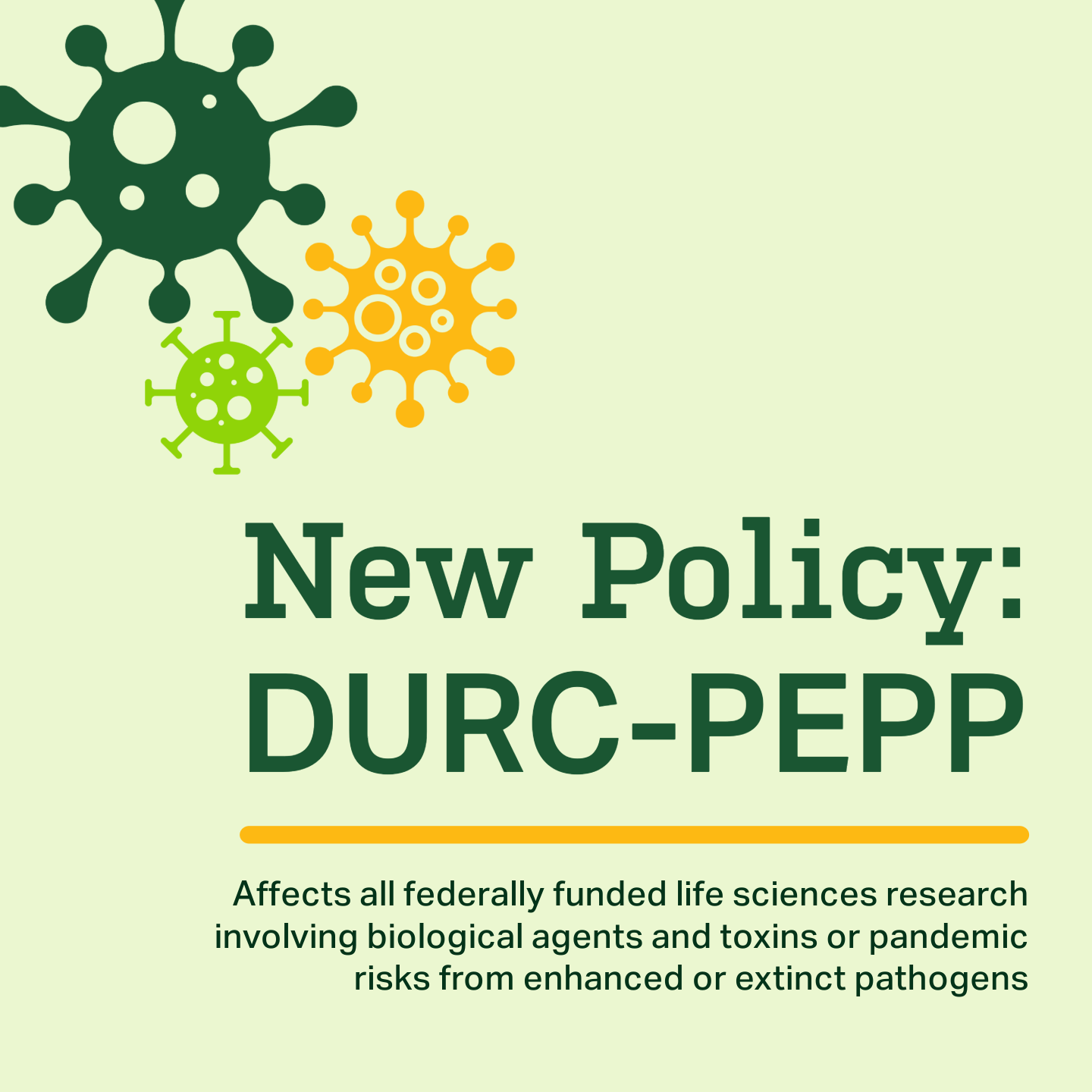Update: Executive Order 14292, “Improving the Safety and Security of Biological Research”, issued on May 5, 2025, has ordered a suspension of all federally funded dangerous gain-of-function research while the DURC-PEPP Policy is revised or replaced. Improving the Safety and Security of Biological Research – The White House.
A new policy affecting all federally funded life sciences research involving biological agents, toxins or pandemic risks from enhanced or extinct pathogens takes effect May 6. To ensure the University of Alabama at Birmingham research community is informed and compliant with the new policy, Environmental Health & Safety (EH&S) has developed training and support resources for affected researchers.
The new policy – called the United States Government Policy for Oversight of Dual Use Research of Concern (DURC) and Pathogens with Enhanced Pandemic Potential (PEPP) – supersedes prior DURC and Potential Pandemic Pathogen Care and Oversight (P3CO) polices.
EH&S's biosafety team has identified researchers who are affected by the policy and will be assigning training through the Campus Learning System. All UAB researchers are advised to visit the EH&S DURC-PEPP policy webpage prior to May 6 to determine if and/or how this policy applies to their research.
The UAB Office of Research has established an Institutional Review Entity to make determinations and facilitate risk-benefit assessments and risk-mitigation plans. The EH&S DURC-PEPP webpage includes the oversight framework at UAB, including the steps for approval.
Questions about this new policy and UAB’'s oversight framework should be emailed to biosafety@uab.edu.
Defining DURC and ePPP:
According to the National Institutes of Health (NIH), DURC is “life sciences research that, based on current understanding, can be reasonably anticipated to provide knowledge, information, products, or technologies that could be misapplied to do harm with no, or only minor, modification to pose a significant threat with potential consequences to public health and safety, agricultural crops and other plants, animals, the environment, materiel, or national security.”
According to the NIH, enhanced potential pandemic pathogen (ePPP) research is “research that may be reasonably anticipated to create, transfer or use potential pandemic pathogens resulting from the enhancement of a pathogen’s transmissibility and/or virulence in humans. ... NIH-supported ePPP research requires strict oversight and may only be conducted with appropriate biosafety and biosecurity measures. This research can help us understand the fundamental nature of human-pathogen interactions, assess the pandemic potential of emerging infectious agents such as viruses and inform public health and preparedness efforts, including surveillance and the development of vaccines and medical countermeasures. While such research is inherently risky and requires strict oversight, the risk of not doing this type of research and not being prepared for the next pandemic is also high. While ePPP research is a type of so called “gain-of-function” (GOF) research, the vast majority of GOF research does not involve ePPP and falls outside the scope of oversight required for research involving ePPPs."

